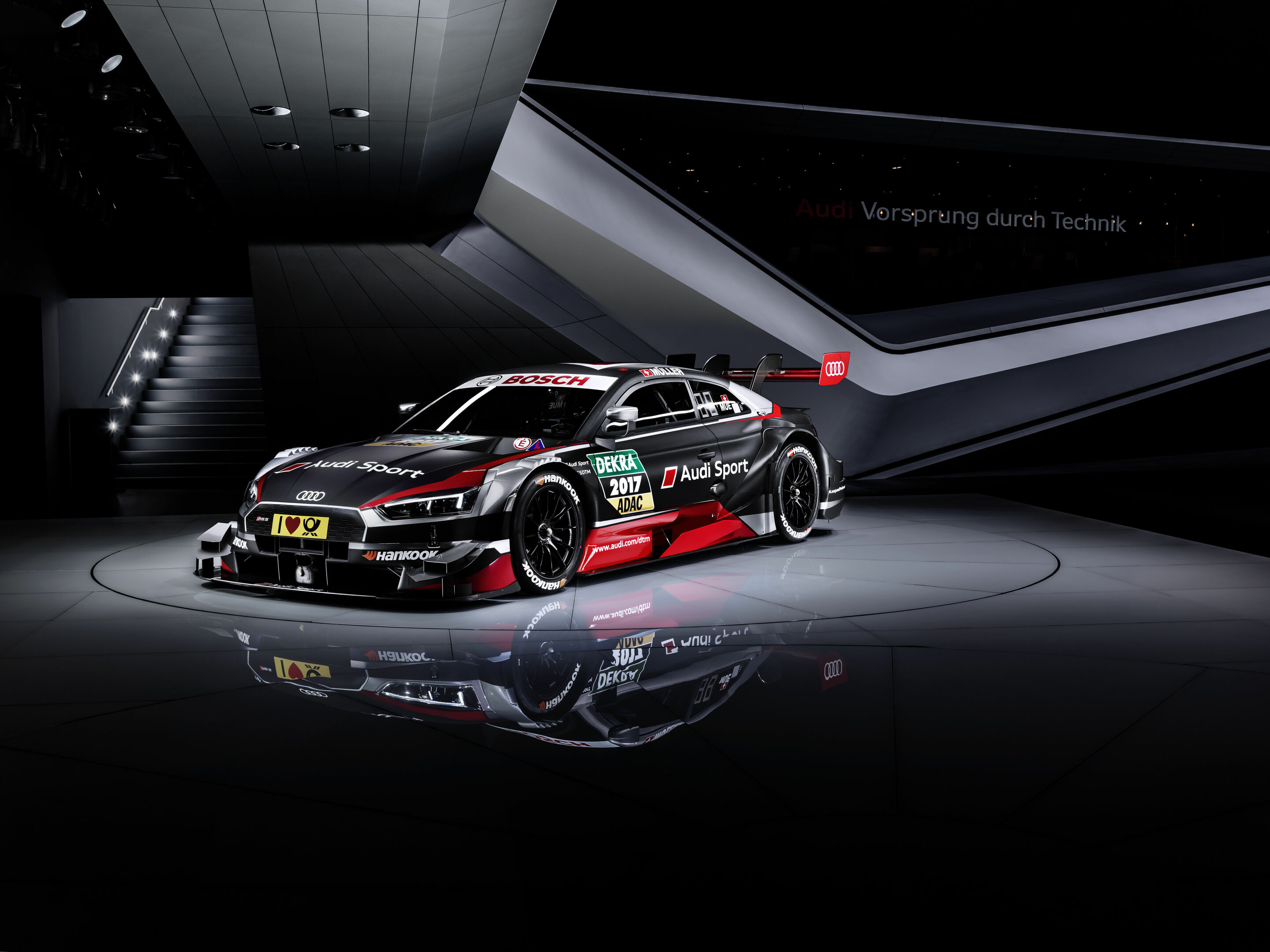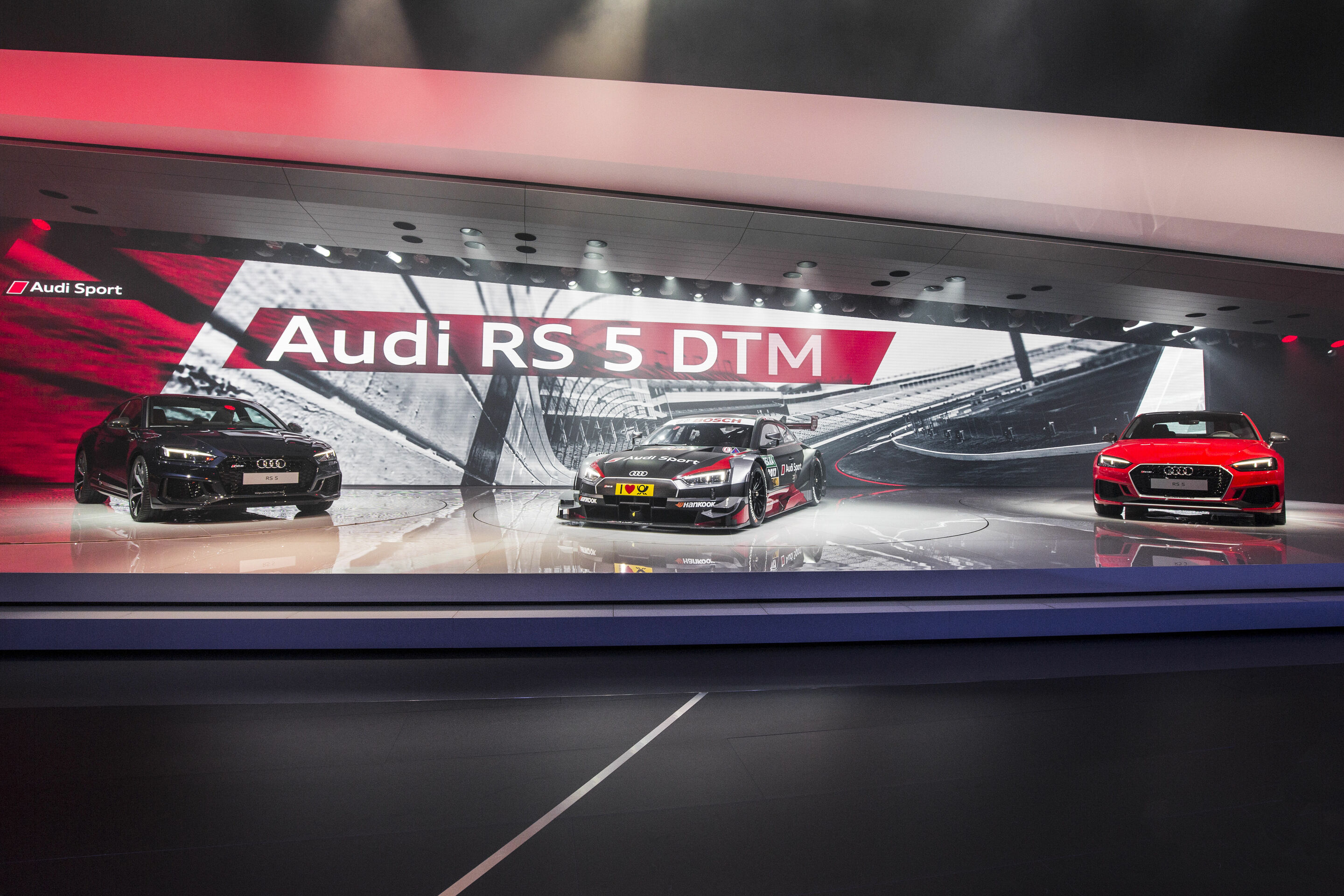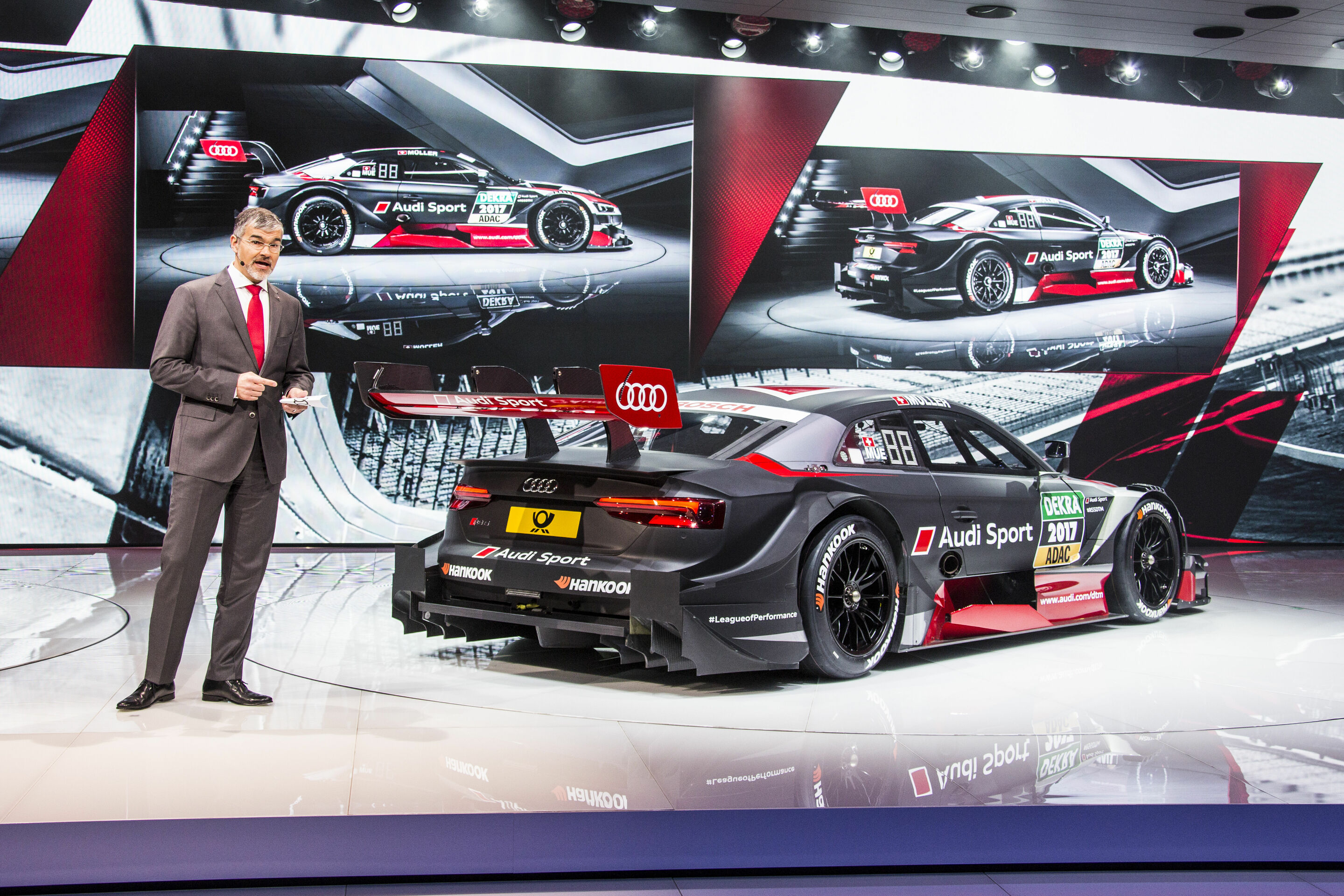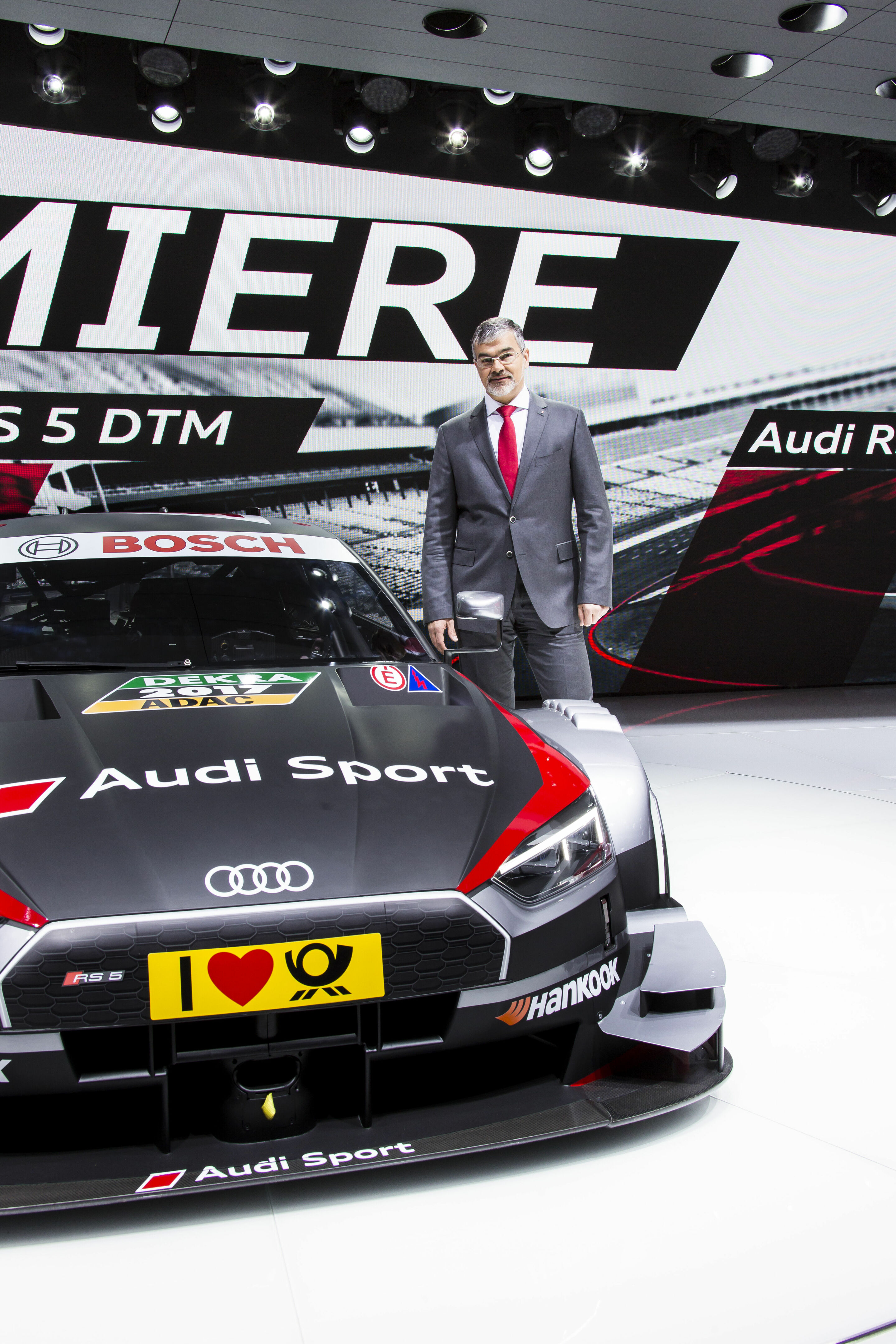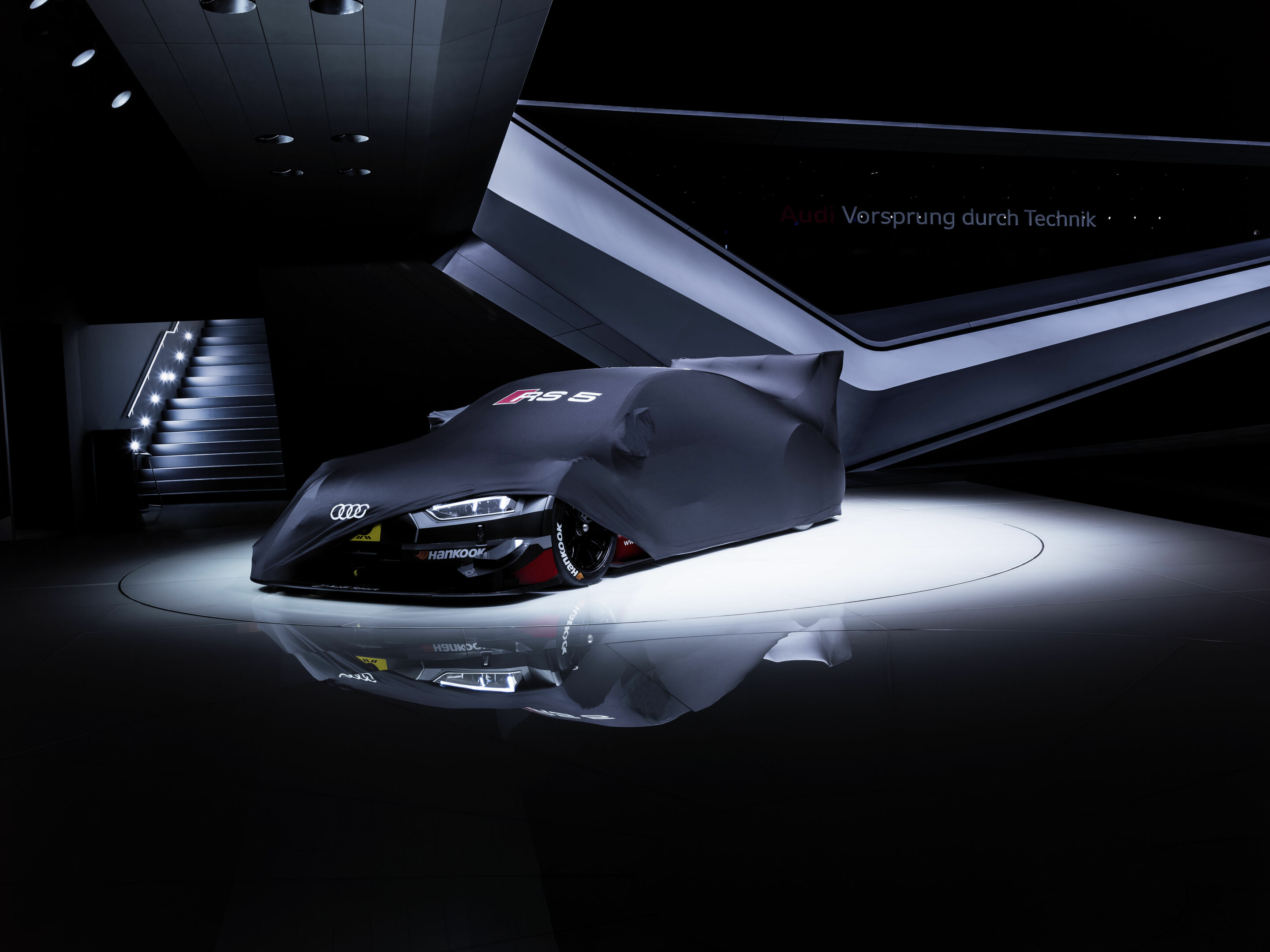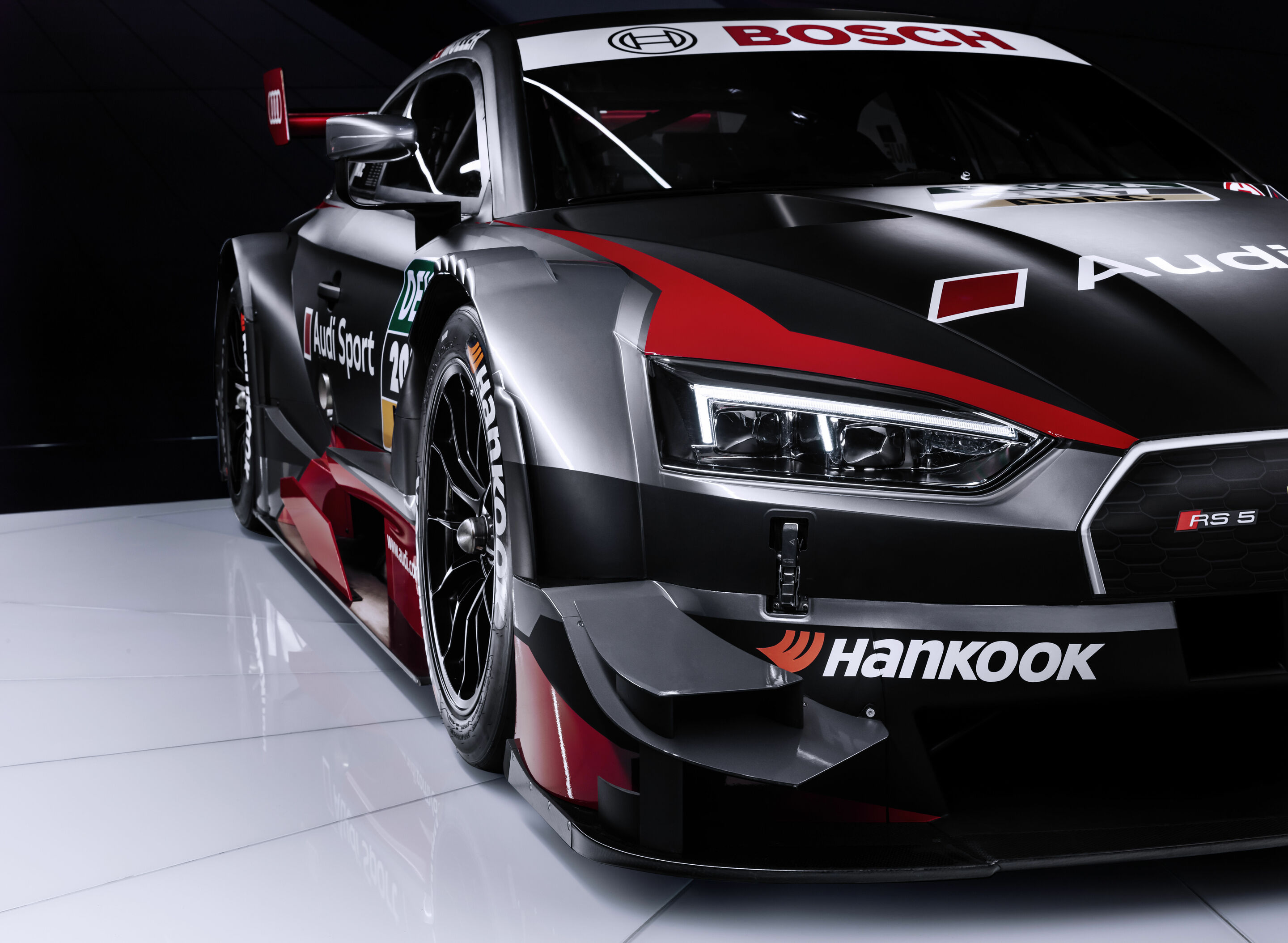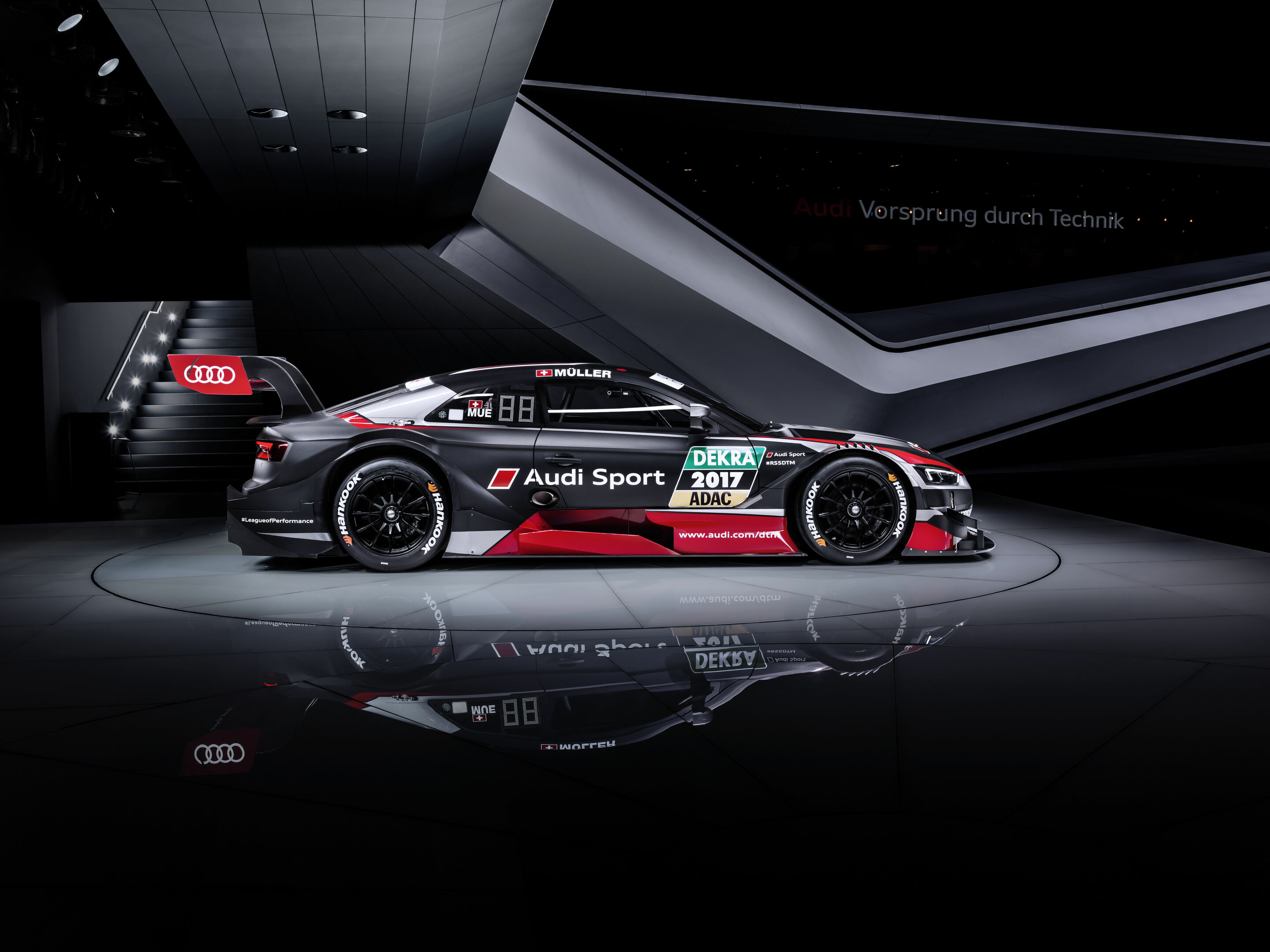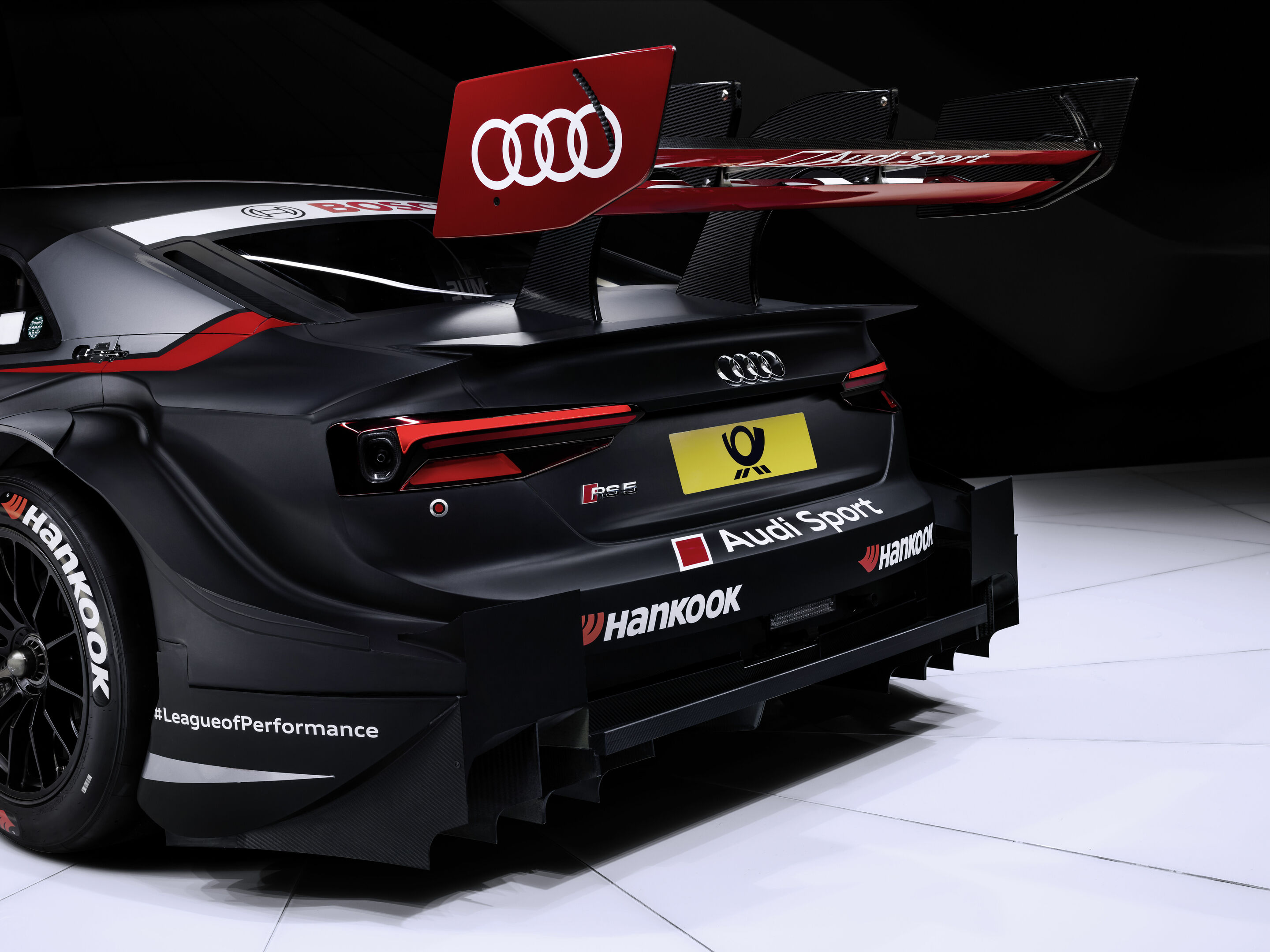World premiere in Geneva: the new Audi RS 5 DTM
- New design language, progressive styling and extreme aerodynamics
- First production model and DTM racing version to have been developed in parallel
- Engine output boosted to more than 500 HP
Clear the stage for an exciting new race car: At the same time as the production model, Audi Sport presented the DTM racing version of the Audi RS 5 Coupé at the Geneva Motor Show. The new RS design language premieres in this model that features numerous modifications required by the regulations as well.
“This is a special day for me and everyone involved in the DTM project,” says Head of Audi Motorsport Dieter Gass. “For the first time, we developed a new DTM car in parallel with the production model. This underlines once again how closely motorsport and production work together at Audi.” The track record of the previous-generation model sets benchmarks for the future. Having clinched ten victories in each of the last two seasons, it was the most successful DTM car in both years. “Obviously, we’d like to repeat this with the new RS 5 DTM,” Gass adds.
Visually, the third-generation Audi RS 5 DTM clearly stands out from its two successful predecessor models. “It appears even more progressive and is even more extreme in terms of aerodynamics,” says Project Leader Stefan Gugger. “In many areas of aerodynamics, we explored further detailed options.” This is evident particularly in the area of the front end and around the rear wheel arches. On the race car, the distinctive single-frame radiator grill of the new Audi RS 5 consists of a very thin film. The restrictive DTM regulations allow the engineers the greatest latitude around the rear wheel arches. Accordingly, they have been trimmed for maximum downforce combined with utmost efficiency.
“In addition, we’ve improved the components in terms of accuracy of fit once again,” says Gugger. “As far as gap dimensions are concerned, Audi has always stood out from the competition. Still, we’ve made another step that enhances aerodynamic performance.” New as well is the rear wing, which now consists of two flaps. To increase the effectiveness of the Drag Reduction System (DRS), the entire wing is no longer lowered but, like in Formula 1, the top flap flattened – which is intended to produce even more overtaking maneuvers in future DTM events.
The objective of the new regulations is to make the cars more challenging to handle in order to put greater emphasis on the drivers’ performance. Among other things, aerodynamic downforce of the DTM race cars has been reduced. Decisive here on all cars are modified geometries of the specification front splitters, underfloors and rear diffusers. Ride height has increased due to the regulations as well.
That the new Audi RS 5 DTM is faster than its predecessor in spite of these modifications is primarily attributable to two additional changes. In the 2017 season, tire partner Hankook will be supplying softer tires. While allowing faster lap times to be achieved on the one hand they are deliberately designed to significantly degrade after a few laps on the other. At the same time, the four-liter V8 engine of the Audi RS 5 DTM now delivers more than 500 HP. “You can feel this additional power in the cockpit,” says Jamie Green who in winter, together with Mattias Ekström, performed the major part of the testing work for the 2017 season.
The base of the engine used in the Audi RS 5 DTM has remained unchanged. To achieve the desired power boost, the engineers modified the air intake system and the cooling system. In addition, they made some detailed adjustments to ensure the same reliability as before. After all, a DTM engine has to survive a full season.
Another change resulting from the regulations concerns the suspension, which is now identical on all DTM cars as well. While this avoids costly further developments, the variety of set-up options has remained unchanged.
“The new DTM regulations reflect a major effort aimed at achieving further cost reductions while enhancing the sport and making the cars more attractive,” says Dieter Gass. “These are exciting times for the DTM. We have more power, softer tires and less downforce. Combined with the best drivers, we expect to see even more thrilling racing. I can only invite everyone to come to Hockenheim at the beginning of May to personally witness the first race of our new baby.”
Additional information and content:
Basic information about our 2017 DTM program
Technical data Audi RS 5 DTM (2017)
Photos: the new Audi RS 5 DTM
